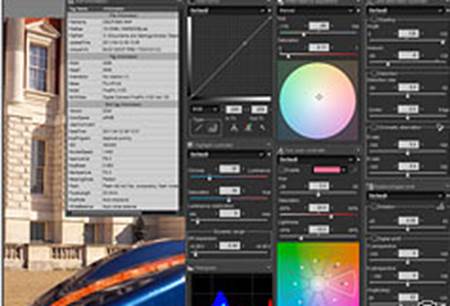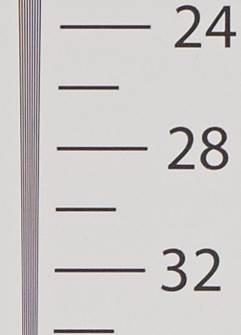Raw
Raw
and Raw conversion
Supplied software
The Fuji X-E1 transports with the 'FinePix
CD' software disk, including:
·
MyFinePix Studio Ver 3.2 - A basic file viewer /
manager (Windows only)
·
FinePix Viewer Ver 3.6 - A file viewer / manager
(for Mac OS X 10.3-10.6)
·
RAW File Converter EX - A full-featured RAW
converter based on SilkyPix
The X-E1
transports with its own customized, but fully functional version of SILKYPIX, named
RAW File Converter EX. This is a flexible part of the software which includes a
wide range of options and adjustments, and which has the ability to generate
impressive results. Although it is not the easiest converter to grasp: its menu
offers the impression of having been machine-translated, the available options
are not arranged in the necessarily logical way, and the "Help" on
the screen, although it is comprehensive, it's as ramped as you'll see (it
tends to repeat what the options are, rather than explain how they mean). But if
you are prepared to set the time and effort to understand it, then the results
can be very worthwhile.
Once you have done in your way through the
fairly strange terms (images are called "scenes", and parameter
settings are stored in the 'cloakroom'), you will find a variety of tools to
fight back the industry leaders such as Capture One or Adobe Camera Raw. This
includes functions that you will not always find in the accompanying software,
such as highlight recovery, lens aberration correction, and angle adjustment
(here known as, somewhat obscurely, "Digital Shift").

SILKYPIX
allows you to open a folder of images in thumbnail view, so you can easily see
the images you want to work on. Double-clicking on an image (or
"scene") offers a big screen for editing.

The
feature provides a comprehensive setup, but the lack of any meaningful
documentation (and occasionally enigmatic menu options) means that it can take
some time to really get comfortable and find your ways.

Most
options that have a variety of presets allow you to start getting good results
without too much tweaking. Once you are comfortable with the options, you can
save your favorite settings as additional presets to accelerate processing.

There
are many of tool palettes that can be brought up and dismissed by clicking on
the icon at the bottom left of the window. Advanced features offered here
include highlight recovery, lens and editing angles, and color tweaking.

The
level of control is a bit overwhelming - for example, besides the White Balance
tool on the left-hand toolbar, there is also a White Balance Adjustment
palette. The two are non-interactive, which is likely to be confusing.

And
once you are actually customized with the software, there are a few tweak-level
controls for functions such as noise reduction and sharpening. It's not the
most accessible software, but very powerful once you understand it.
RAW
conversion
As usual we prefer to compare the provided
conversion software, any RAW conversion software of the optional manufacturer
and a couple of 3rd party RAW converter. In this case of the Fujifilm X-E1, we
used the provided RAW File Converter EX, integrated Adobe Camera Raw 7.4 RC for
Photoshop CS6, and Capture One Pro 7.0.2.
·
JPEG - Large/ Fine (default settings)
·
ACR - Adobe Photoshop Camera Raw 7.4 RC (default
settings)
·
Capture One Pro 7.0.2 (default settings)
·
RFC - RAW File Converter EX (default settings)
Sharpness
and detail
Most cameras show differently more detail
in RAW compared to their JPEG output, thanks to a combination of very strong
noise reduction and unsubtle sharpening shows in the JPEG, but the demosaicing
algorithm has managed to process the X-Trans sensor so far. The results are on
the X-E1 and X-Pro1, the JPEG conversion in the camera pulls a large amount of
detail out of the sensor data. All of the Adobe Camera Raw, Capture One Pro,
and Raw File Converter EX struggled with detail, especially with detail in
foliage.
The newest versions of ACR and Capture One
are significantly better than their predecessors, which is currently
confronting with the JPEG output of the X-E1. Between the two, Capture One Pro
specially sharpens more obviously, while ARC shows things that are a little
softer, creating a file with fewer sharpening objects, perhaps so that the photographers
may have their own choices about the level of sharpening to apply. Fujifilm's
own version of SilkyPix appears short without some custom tweaks, as you can
see from the following crop, which is soft and gloomy.

JPEG
(default setting, WB manual) ISO 200 studio scene 100% crop

Adobe
Camera Raw 7.4 Release Candidate RAW -> JPEG (default settings, manual WB)
ISO 200 studio scene 100% crop

Capture
One Pro, (default settings, manual WB) ISO 200 studio scene 100% crop

RAW
File Converter EX, (default settings, manual WB) ISO 200 studio scene 100% crop
Resolution
In the comparison of the high-contrast
detail of a test ranking chart, the situation is a little different. The
in-camera handling creates clear images which have absolutely no artifacts. The
RAW converter is not able to provide higher resolution, and cannot really
combine well to clean. Both ACR and Capture One create color artifacts, but the
latest versions do better with detail; the photos of Capture One are again
sharper than they are expected, leaving slight halos around high contrast
areas. SilkyPix's default rendering is softer, but still shows some color
errors, although faint.

JPEG
from the camera

RAW
File Converter EX (RAW)

Adobe
Camera Raw 7.4 RC (RAW)

Capture
One Pro 7.0.2 (RAW)
Raw conversion
artifacts
The unique feature of the X-E1 is, of
course, the X-Trans CMOS sensor, with its non-Bayer color filter array. This
requires a demosaicing algorithm approach that is completely different to
create an image file from the sensor data and as a result, third-party Raw
converters are unable to be easily to support the cameras.
Adobe Camera Raw had problem with the color
bleeding where it should not. Having a close look at the Fujitsu and Rowney
logos below, comparing the JPEG images to those that are translated with ACR
7.3. Even the blond hair covering over the robot body in the test shots turned
into red and blue when it passed over the other colors. Adobe had minimal
impact, though generally the sharpness of the image goes down; it is difficult
to say that the two phenomena are related, but it is far to be able to correct
the lack of sharp easily rather than it is color smudged.

JPEG,
ACR 7.3 and ACR 7.4 RC
Our studio test background reveals these
bugs quite distinctly, but they are not clear in most real - life images. So,
those who want the images built as accurately as possible will encourage the
new efforts of Adobe and Phase One; the manufacturers seem to have successfully
handled the challenges of demosaicing algorithm created by the X-Trans sensor.
See more detailed research of Adobe's new
X-Trans tool, developed in ACR 7.4 Release Candidate in the "Adobe’s
Fujifilm X-Trans sensor processing tested” story.